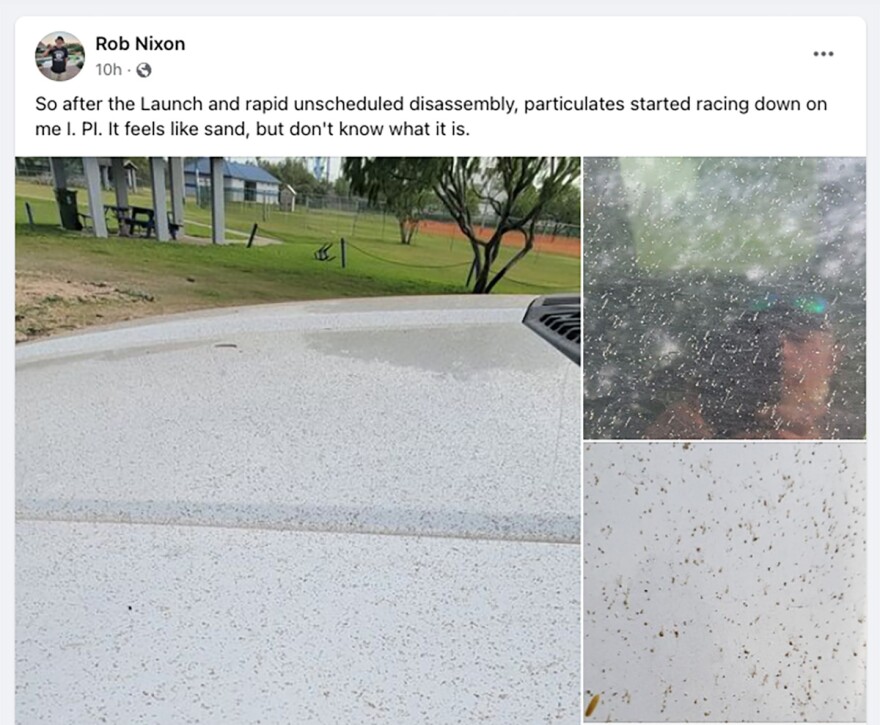Editor’s Note: This story was updated on Saturday April, 22nd to include a statement from the FAA
The Starship/Super Heavy SpaceX rocket made liftoff on Thursday morning in its full prototype configuration for the first time since receiving FAA approval on Friday.
Four minutes later, Starship failed to detach from its booster, and it exploded in mid-air over Boca Chica beach in the Rio Grande Valley, bringing its planned 90-minute trip to a location in the Pacific Ocean just north of Hawaii to a sudden end.
Within minutes, residents of nearby Port Isabel reported on social media that they saw “particulates” or “ash” settling onto homes, cars, and streets.
Rob Nixon, vice chairman of Surfrider Foundation South Texas Chapter, lives in San Benito but works in South Padre Island. He watched Thursday’s rocket launch from Port Isabel. He said the rocket’s impact could be seen, heard, felt and touched for miles around.
“I wasn't expecting to collect raining particulates today,” he said. “And my wife's classroom in Los Fresnos vibrated 20 miles away.”
Residents wondered on social media if the dust-like substance came from the liftoff, the explosion, or somewhere else.

“They were wet when they came down so I think it came down from the clouds,” Nixon said. “It feels like sand but it is much finer than our local sand.”
It was not immediately clear what the matter was or where it came from.
On Saturday, the FAA confirmed to TPR that the “Anomaly Response Plan” outlined in the 2022 Programmatic Environmental Assessment (PEA) has been activated.
The plan requires SpaceX to take extra steps to coordinate with other agencies to remove launch debris from the surrounding sensitive habitats, as well as perform a post-launch survey with a qualified biologist.
The FAA is not directly required to inspect or study the impacts.
Elma Arredondo, a retired school teacher, worked at Garriga Elementary in Port Isabel, just five miles from where SpaceX has its launch base.
“I was just told ‘ashes’ fell from the sky and on the Garriga Elementary kids that were outdoors,” she said. “They all ran inside when it started ‘raining.' "
Arredondo said that she has been concerned about SpaceX “from the very beginning.”
“What kind of danger did Cameron County bring to our community when SpaceX was welcomed here?” she asked. “As a retired school teacher, I immediately thought of Garriga.”
The elementary school is part of Port Isabel ISD, which received a $5 million donation from the Musk Foundation in 2021.





